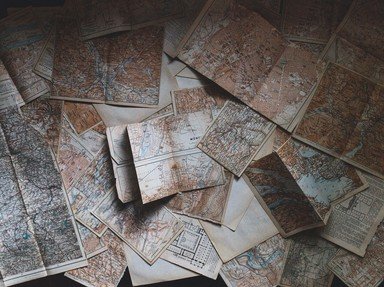Quiz Answer Key and Fun Facts
1. In 1541, an expedition led by Gonzalo Pizarro left Quito, Ecuador and traveled east over the Andes in search of El Dorado. One of his lieutenants took some of the men and traveled ahead to explore the Coca River. What was the name of Pizarro's lieutenant, who became the first known explorer to navigate the Amazon River?
2. The Galapagos Islands received their first resident in 1807 when an Irishman by the name of Patrick Watkins was marooned there. During his stay on the islands, Watkins grew vegetables and would sometimes trade them for what item from passing whale ships?
3. In 1841, James Brooke was given control of an area of land by the Sultan of Brunei. In 1842, he established independent rule and became known as the first White Rajah. What was the name of his kingdom?
4. The Incan empire, under the rule of Huayna Cápac, took control of what is now modern-day Ecuador in the late 15th century, making Quito the capital of the northern quarter of the empire. After the death of Huayna Cápac, which of his sons declared himself king of Quito?
5. After being reached by European explorers in the late 19th century, which African country was referred to as the "Pearl of Africa"?
6. In 1815, which of Indonesia's volcanoes erupted with an explosion measuring 7 on the Volcanic Explosive Index, causing more deaths than both Vesuvius and Krakatoa?
7. In 1704, a young woman in the Kingdom of Kongo claimed to have died and her body taken over by St. Anthony. What was the name of the prophetess that started Antonianism?
8. In 1519, Ferdinand Magellan began a voyage to circumnavigate the world and find a westward route to which group of islands in Indonesia?
9. During his voyage on H.M.S. Beagle, which English naturalist arrived at the Galapagos Islands in 1835, where he made the observations that would be the base of his work "On the Origin of Species"?
10. In 1889, a small schooner named the "Equator" traveled to the Gilbert Islands in the Pacific Ocean, carrying as a passenger a very famous author. Who was that famous writer who later wrote about his voyage in his work "In the South Seas"?
Source: Author
tiffanyram
This quiz was reviewed by FunTrivia editor
bloomsby before going online.
Any errors found in FunTrivia content are routinely corrected through our feedback system.
